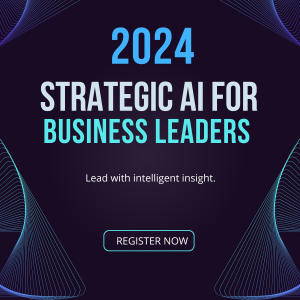AI GLOSSARY - D
Definition: The process of discovering patterns and knowledge from large amounts of data. The data sources can include databases, data warehouses, the web, and more.
Definition: A subset of machine learning where artificial neural networks, algorithms inspired by the human brain, learn from large amounts of data. Deep learning is particularly effective for identifying patterns and making predictions.
Definition: A model used in data mining for making decisions. It represents choices and their possible consequences, including chance event outcomes, resource costs, and utility.
Definition: The process of reducing the number of random variables under consideration, by obtaining a set of principal variables. Techniques such as PCA (Principal Component Analysis) are often used to simplify the data without losing important information.
Definition: A type of model in machine learning that models the dependence of an unobserved variable 𝑦y on an observed variable 𝑥x. In essence, it tells you the boundaries between different categories in the data.
Definition: A collection of data specifically prepared and used to train or test machine learning models. Typically, datasets are split into training sets and testing sets to evaluate the performance of algorithms.
Definition: The techniques applied to raw data to make it suitable for building and training machine learning models. This includes normalisation, transformation, feature extraction, and selection.
Definition: A field of computer science that studies distributed systems. In the context of AI, it often relates to the processing of AI tasks distributed over networked computers.
Definition: A regularisation technique for neural networks that helps prevent overfitting. Dropout temporarily drops units (artificial neurons) from the network, along with all its incoming and outgoing connections.
Definition: Computer systems intended to converse with human users via textual or auditory methods. Examples include virtual assistants and chatbots that can engage in a dialogue.
Definition: Combines deep learning and reinforcement learning principles to solve various problems within an environment. It learns by trial and error using deep neural networks to decide the actions to achieve its goals.
Definition: Computer-based systems that help in decision-making processes, utilising data, analytics, machine learning, and decision models.
Definition: A method for solving complex problems by breaking them down into simpler subproblems. It is used extensively in optimisation problems where the decisions are sequenced or staged.
Definition: The process of integrating multiple data sources to produce more consistent, accurate, and useful information than that provided by any individual data source.
Definition: A type of neural network that is often used in the field of image processing, specifically aimed at aiding the learning and understanding of hierarchical features in images.
Definition: A statistical method used to determine which variables differentiate between two or more naturally occurring groups.
Definition: The process of identifying and removing errors from computer hardware or software. In AI, debugging involves fixing errors in algorithms that cause incorrect outputs or behaviours.
Definition: The process of removing noise from data, which improves the quality of the data and thereby the performance of machine learning models.
Definition: A method for modelling the operation of a system as a discrete sequence of events in time. Each event occurs at a particular instant in time and marks a change of state in the system.
Definition: The process of cleaning and unifying complex data sets for easy access and analysis. This is a preliminary step before more detailed data analysis and modelling.
Definition: A digital replica of a living or non-living physical entity. By bridging the physical and the virtual world, data is transmitted seamlessly allowing the virtual entity to exist simultaneously with the physical entity.
Definition: The process of analysing the grammatical structure of a sentence, establishing relationships between “head” words and words which modify those heads.
Definition: A set of platform as a service products that use OS-level virtualisation to deliver software in packages called containers. In AI, containers can be used to efficiently manage and deploy AI applications.
Definition: Specific knowledge of the domain the data is drawn from, crucial for designing and interpreting AI models. Domain knowledge helps in choosing appropriate data, features, and models that are relevant to the problem area.
Definition: Refers to the theory that the brain operates using two separate systems for processing information, often used in AI to model different types of learning and problem-solving.




